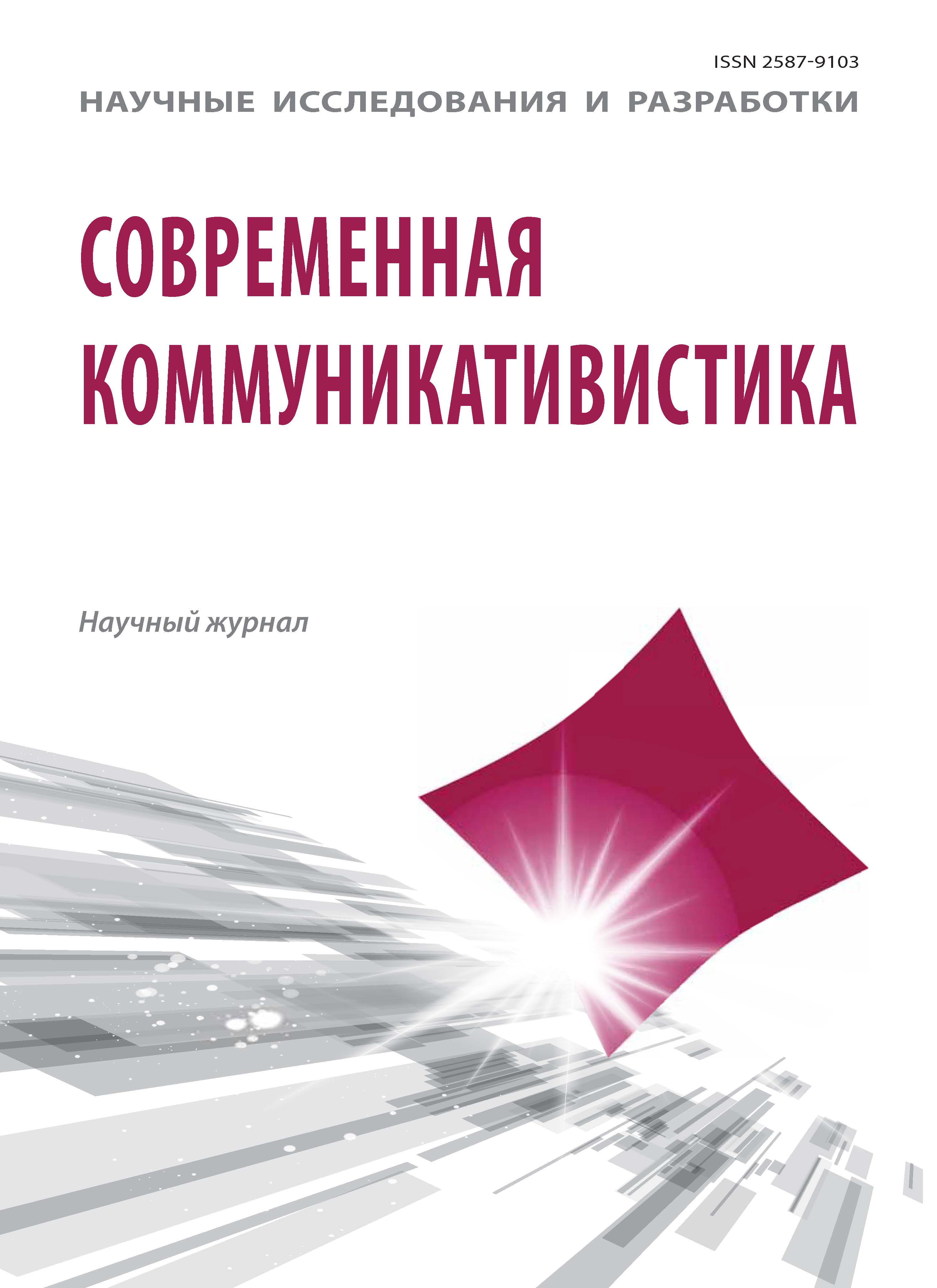from 01.01.2016 until now
Minsk, Belarus
Introduction. The relevance of the study is determined by the importance of communicative distance in communication and the necessity to study the types of violation of communicative distance, as well as verbal and non-verbal means which describe them. Aim. The aim of the article is to establish the violations of the communicative distance in everyday discourse and to conduct the analysis of these violations. Methodology and research methods. Main research methods include the hypothetical-deductive method, the interpretive method, the contextual analysis and introspection. Results. In the theoretical part the concepts of everyday discourse and communicative distance are considered, the components of a typical situation of privacy violation are indicated, the classifications of violations of communicative distance proposed by scientists are given. In the practical part, based on the proposed classifications and the results of the study, the author’s classification of violations of the correlation between privacy and publicity in everyday discourse is worked out. It has been established that these violations are multi-vector. Violations directed towards reducing the communicative distance are presented more widely than violations directed towards its increasing. A person who breaks the distance can play both an active role in a communicative situation and a passive one. Violations can be intentional and unintentional. As a result of the analysis, ways of expressing violations of the correlation between privacy and publicity in communication, as well as verbal and non-verbal means of indicating the revealed violations, were identified. Scientific novelty lies in working out the author’s classification of violations of the correlation between privacy and publicity in everyday discourse. Practical significance. The results can be used by specialists who are interested in the problems of communicative distance.
communicative distance; privacy; publicity; everyday discourse; verbal means; non-verbal means
1. Volkova T.V. Problema razrusheniya privatnogo prostranstva lichnosti: granitsa telesnosti v sovremennoi rossiiskoi kul’ture [The problem of the destruction of the private space of the individual: the boundary of corporality in modern Russian culture] // Vestnik TvGU. Seriya «Filosofiya», 2014. No. 3. Pp. 99-109. (In Russian).
2. Gorelov I.N. Neverbal’nye komponenty kommunikatsii [Non-verbal components of communication]. M.: LIBROKOM Publ., 2009. 112 p. (In Russian).
3. Dubrovchenko E. M. Kommunikativnoe davlenie kak forma narushenii privatnosti [Communication pressure as a form of privacy violations] // Materialy ezhegod. nauch. konf. prepo-davatelei i aspirantov un-ta, Minsk, 15-16 aprelya 2021 g. /Minsk State Linguistic University; redkol.: N.E. Lapteva [i dr.]. Minsk, 2021. V. 2. Pp. 49-52.
4. Dubrovchenko E.M. Transformatsiya kommunikativnoi distantsii v privatnom obshchenii [Transformation of communicative distance in private communication] // Bulletin of Chelyabinsk State University. Philology Sciences, 2021. V. 126. Pp. 69-76.(In Russian).
5. Il’in E.P. Psikhologiya obshcheniya i mezhlichnostnykh otnoshenii [Psychology of communication and interpersonal relationships]. SPb.: Piter, 2009. 576 p. (In Russian).
6. Karasik V.I. YAzykovaya kristallizatsiya smysla [Linguistic crystallization of meaning]. Volgograd: Paradigma Publ., 2010. 422 p. (In Russian).
7. Karasik V.I. YAzykovoj krug: lichnost’, kontsepty, diskurs [Language circle: personality, concepts, discourse]. Volgograd: Peremena Publ., 2002. 477 p. (In Russian).
8. Karasik V.I., Prokhvacheva O.G., Zubkova YA.V., Grabarova EH.V. Inaya mental’nost’ [Other mentality]. M.: Gnozis Publ., 2005. 352 p. (In Russian).
9. Makarov M.L. Osnovy teorii diskursa [Fundamentals of discourse theory]. M.: Gnozis Publ., 2003. 280 p. (In Russian).
10. Osnovy teorii kommunikatsii: ucheb / pod red. prof. M.A. Vasilika.[Fundamentals of the theory of communication: textbook]. M.: Gardariki Publ., 2003. 615 p. (In Russian).
11. Burgoon J.K. A Communication Model of Personal Space Violations: Explication and an Initial Test // Human Communication Research. 1978-12-01. Vol. 4, iss. 2. Pp. 129-142.
12. Burgoon J.K., Hale J.L. Nonverbal expectancy violations: Model elaboration and application to immediacy behaviors // Communication Monographs. 1988-03-01. Vol. 55, iss. 1. Pp. 58-79.
13. Hall E. The Hidden Dimension. New York: Anchor, 1969. 217 p.
14. Kagehiro D.K., Taylor R.B., Harland A.T. Reasonable expectation of privacy and third party consent searches // Law and Human Behavior. 1991. № 15 (2). Pp. 121-138.
15. Kaya N., Weber M. J. Cross-cultural differences in the perception of crowding and privacy regulation: American and Turkish students. Journal of Environmental Psychology, 2003. Iss. 23. Pp. 301-309.
16. Solove D.J. A Taxonomy of Privacy, 154 University of Pennsylvania Law Review. Vol. 154. № 3. 2006. Pp. 477-560.
17. Warren S.D., Brandeis L.D. The Right to Privacy // Harvard Law Review. Vol. 4. No. 5. (Dec. 15, 1890), pp. 193-220. URL: http://links.jstor.org/sici?sici=0017-811X%2818901215%294%3A5%3C193%3ATRTP%3E2.0.CO%3B2-C (accessed at 21 March 2022).
18. Westin A.F. Privacy and freedom. New York, 1967. 487 p.







